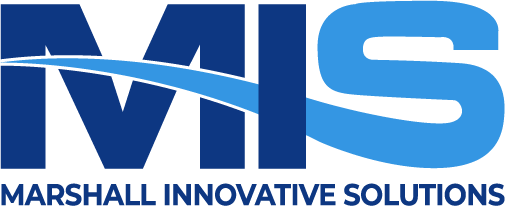In the modern cloud computing landscape, Infrastructure-as-a-Service (IaaS) platforms play a critical role in enabling agile, scalable, and cost-effective development environments. DigitalOcean has emerged as a prominent IaaS provider, particularly favored by startups, SMBs, and technical teams seeking simplicity without compromising on power. This blog post explores how organizations can leverage DigitalOcean’s IaaS offerings—particularly Droplets, managed databases, and emerging AI/ML capabilities—to streamline development and deployment efforts.
Why Digital Ocean? A Focused IaaS Approach
DigitalOcean positions itself as a developer-friendly, cost-effective alternative to larger cloud providers like AWS, Azure, or GCP. Its value proposition lies in its simplicity, predictable pricing, and ease of use—attributes that resonate with technical teams focused on speed, cost control, and minimal administrative overhead.
Key Features for Development and Deployment
1. Droplets (Virtual Machines)
DigitalOcean Droplets are lightweight Linux-based virtual machines that can be spun up in seconds. They come in a range of configurations including:
- Basic Droplets for general-purpose workloads
- CPU-Optimized Droplets for compute-intensive applications
- Memory-Optimized Droplets for in-memory databases and caching
Use Case: Ideal for running web servers, CI/CD pipelines, microservices, containerized workloads, and development environments.
2. Managed Databases
DigitalOcean offers fully-managed database services for:
- PostgreSQL
- MySQL
- Redis
- MongoDB
These managed solutions include automated backups, high availability, read-only replicas, and effortless scaling—all with minimal configuration.
Use Case: Backend data persistence for SaaS platforms, content management systems, analytics engines, and more.
3. App Platform (PaaS Layer)
While primarily an IaaS provider, DigitalOcean also offers App Platform, a Platform-as-a-Service (PaaS) solution for rapid deployment of web applications using Git integrations and auto-scaling.
Use Case: Great for teams that want to abstract server management without losing visibility into runtime behavior.
4. AI/ML Capabilities
Recently, DigitalOcean has begun investing in AI/ML services through partnerships and acquisitions (e.g., Paperspace). Teams can now access GPU-enabled Droplets and tools for training, inference, and deployment of machine learning models.
Use Case: Building and deploying generative AI models, computer vision applications, or natural language processing pipelines.
5. Scalable Storage Solutions
DigitalOcean provides flexible storage options, including:
- Block Storage: Attachable SSD volumes for persistent storage
- Object Storage (Spaces): S3-compatible solution for storing unstructured data
- Volumes with Automated Backups: Ideal for data resilience
Use Case: Media storage, backups, logs, and static asset hosting.
Pros of Using DigitalOcean
✅ Simplicity and Developer Experience
The UI/UX and API are intuitive, making it easy for development teams to get started quickly.
✅ Predictable Pricing
Flat-rate pricing helps avoid unpredictable billing common in hyperscale clouds.
✅ Fast Provisioning
Droplets can be deployed in under a minute, enabling rapid prototyping and testing.
✅ Robust API and CLI Support
Teams can automate deployment pipelines and infrastructure provisioning via Terraform, Ansible, and other tools.
✅ Global Data Centers
DigitalOcean offers 14+ data center regions across North America, Europe, and Asia for low-latency experiences.
Cons and Drawbacks
❌ Limited Enterprise-Grade Offerings
DigitalOcean lacks the breadth of services found in AWS or Azure (e.g., advanced networking, enterprise support, serverless functions, etc.).
❌ Compliance & Security Certifications
While secure by default, DigitalOcean may fall short on compliance standards (HIPAA, FedRAMP, etc.) required by regulated industries.
❌ Less Mature Ecosystem for AI
Compared to platforms like GCP with Vertex AI or AWS SageMaker, DigitalOcean’s AI offerings are emerging but still early-stage.
❌ Scaling Complexity
For large-scale enterprises, workload orchestration and observability tools are not as integrated or mature.
When to Choose DigitalOcean
DigitalOcean is a strong candidate for:
- Startups and small teams with limited DevOps resources
- Mid-sized enterprises looking to reduce cloud costs
- Development teams that value speed, simplicity, and clear pricing
- Projects that don’t require highly specialized enterprise compliance or vendor lock-in
Leadership Considerations
For technical leads, product managers, and executive stakeholders, DigitalOcean provides a compelling middle ground lower cost and complexity than hyperscalers, but with enough robustness to support modern application lifecycles. However, leaders should evaluate the trade-offs in long-term scalability, compliance, and feature richness depending on business goals.
Conclusion
DigitalOcean continues to evolve as a practical, developer-focused IaaS provider with a growing ecosystem of capabilities. While it may not match the breadth of AWS or Azure, its simplicity, cost-effectiveness, and developer-first design make it a worthy contender for many organizations seeking efficient development and deployment strategies.
Recommendation: Use DigitalOcean for MVPs, test environments, and moderately scaled production workloads, while keeping an eye on AI and compliance capabilities as the platform matures.

